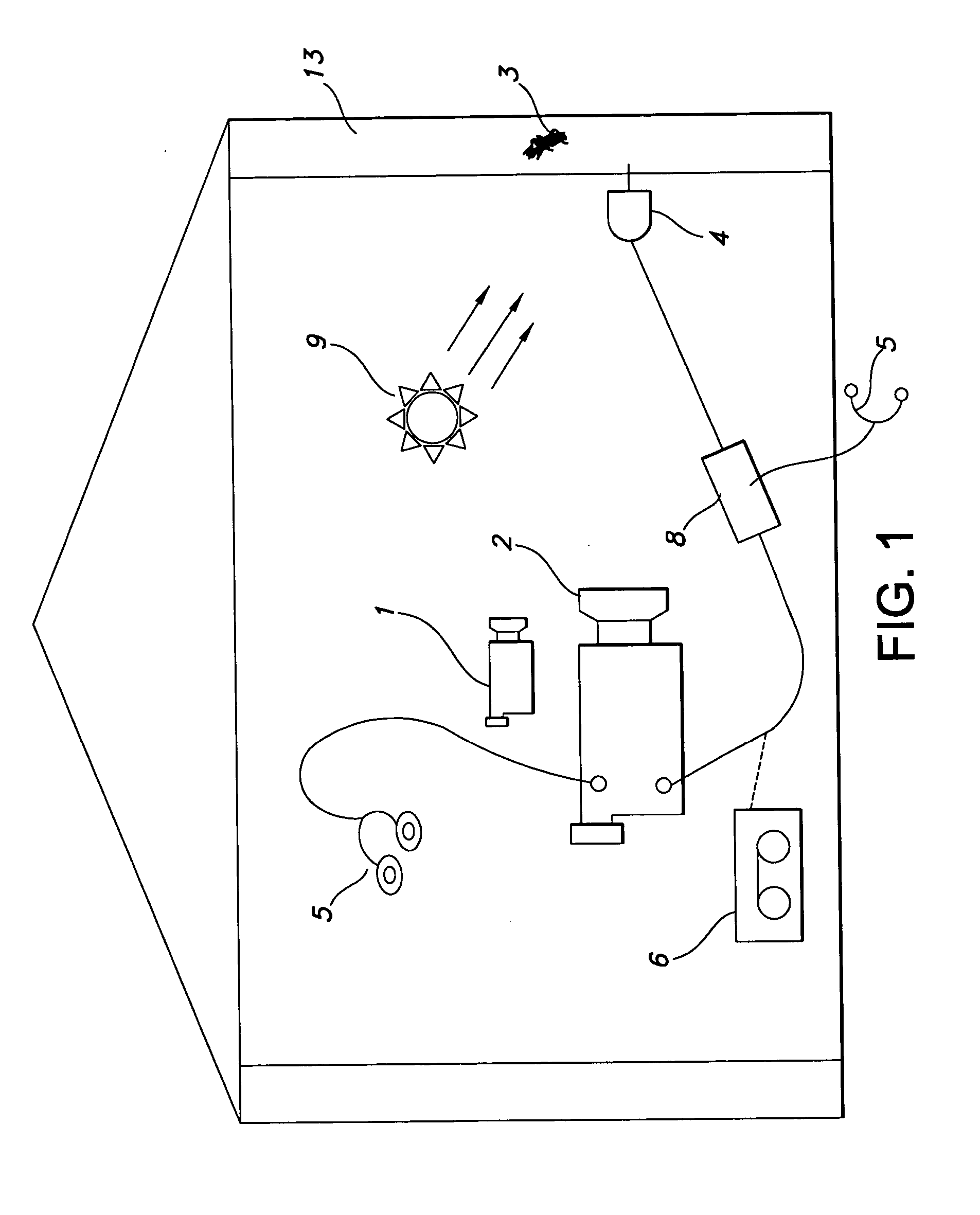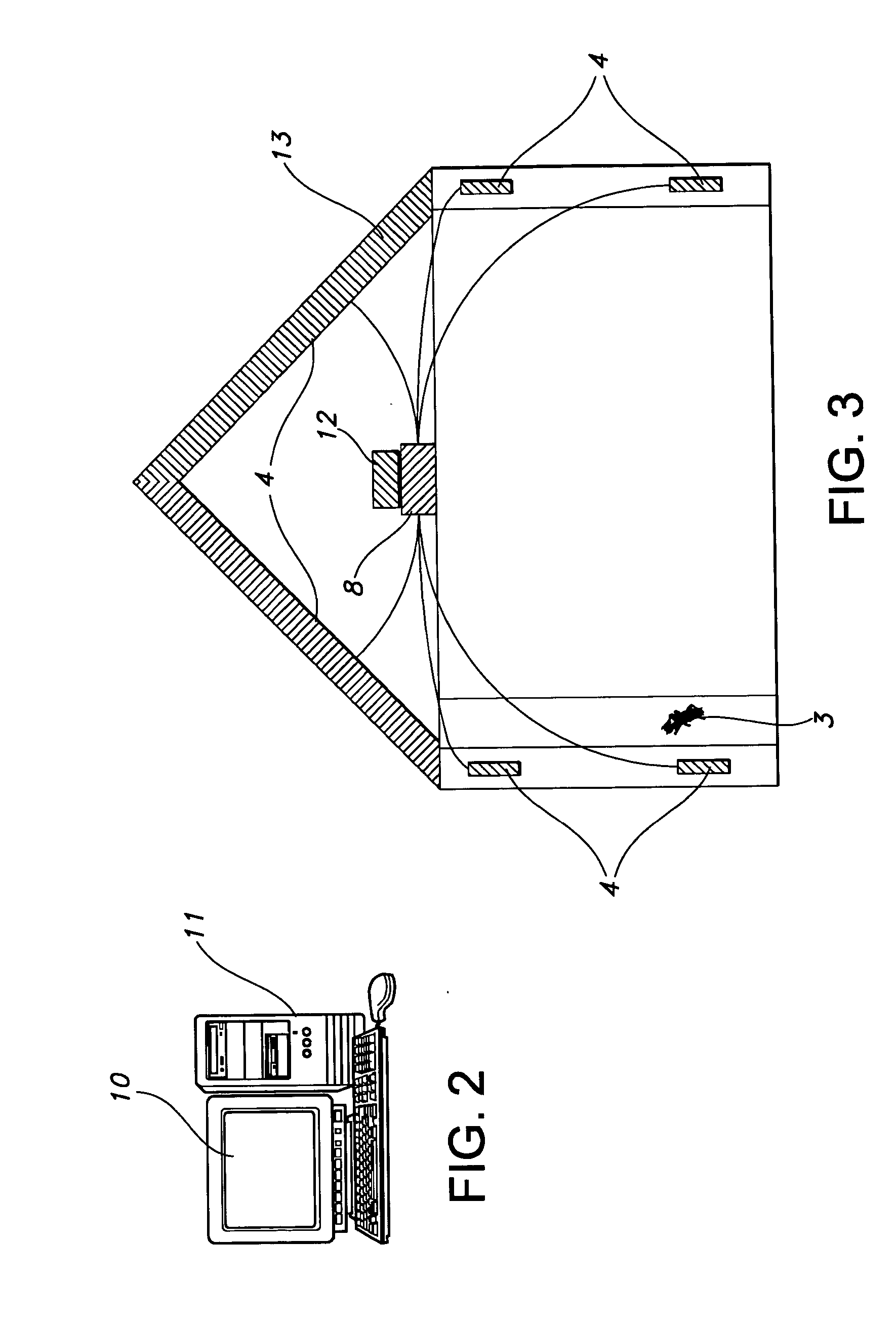Termites are extremely destructive to wood material.
It is difficult to put a dollar amount estimate on termite damage.
Untreated foundations make the house very susceptible to termite
attack.
It is often very difficult and costly to apply effective control measures after a building has become infested with termites.
It is rarely apparent from
visual observation that a termite infestation is active and that wood damage is occurring.
This method has significant disadvantages.
Also, when termites are exposed in this manner, the destruction induces termites to retreat from the disturbed area and may reduce the effectiveness of a subsequent localized treatment.
However, none of these techniques has satisfied the non-destructive and non-subjective requirements, and many infestations are still missed.
A significant
disadvantage, however, is that the gases must be abstracted within a
confined space, such as within the walls of a structure.
These devices are thus unsuitable for detecting termites in wood that is not within a
confined space.
Moreover, the use of these devices to detect termites is very time-consuming and costly as a result.
The ultrasonic frequencies, however, are difficult to detect through walls and other concealing structures due to the
signal's very
short distance of travel (ultrasonic frequencies have very
high transmission loss), and this process fails to take into account the full range of termites noises, which fall primarily in the range of 100 Hz to 15 kHz.
These devices require a high degree of operator skill.
In addition, such devices typically use a relatively narrow frequency range.
The '356 patent, however, fails to disclose specific apparatus, algorithms or
noise patterns useful for detection over the specified frequency range.
The various devices for sensing the destruction of bait sample are useful for detecting the presence of termites in the vicinity of a structure, but cannot be used to locate precise areas of termite infestation in concealed areas within the structure.
Once it has been determined that termites are present in the vicinity of the structure, the only way to determine the actual locations of termites within the structure is to remove portions of the structure, which is, again, damaging and costly.
However, this is a relatively nonspecific method, yielding many, many false positives since there are many sources of temperature differences in a typical structure, such as non-uniform insulation material, air-conditioning ducts, leakage,
air movement through wall cracks, water and
moisture problems, etc.
As a result, detection of termites using
infrared sensors still requires destruction of walls to verify results and to more specifically locate the actual termite infestations.
Furthermore, use of
infrared sensing for detection of termites also requires a relatively high degree of operator skill, training and judgment which adds time and cost to its use.
Such devices, however, generally do not take into account the full range of termite sounds, as explained above.
Moreover, the design of prior devices has generally resulted in only highly localized detection ability, thereby necessitating the taking of many samples or data points, and requiring an inordinate amount of time or number of sensors to completely inspect a structure.
As a result of the various practical difficulties outlined above, the prior devices described above have generally seen insignificant commercial implementation despite the long-felt need for nondestructive termite and wood-destroying
insect detection.
 Login to View More
Login to View More  Login to View More
Login to View More 


